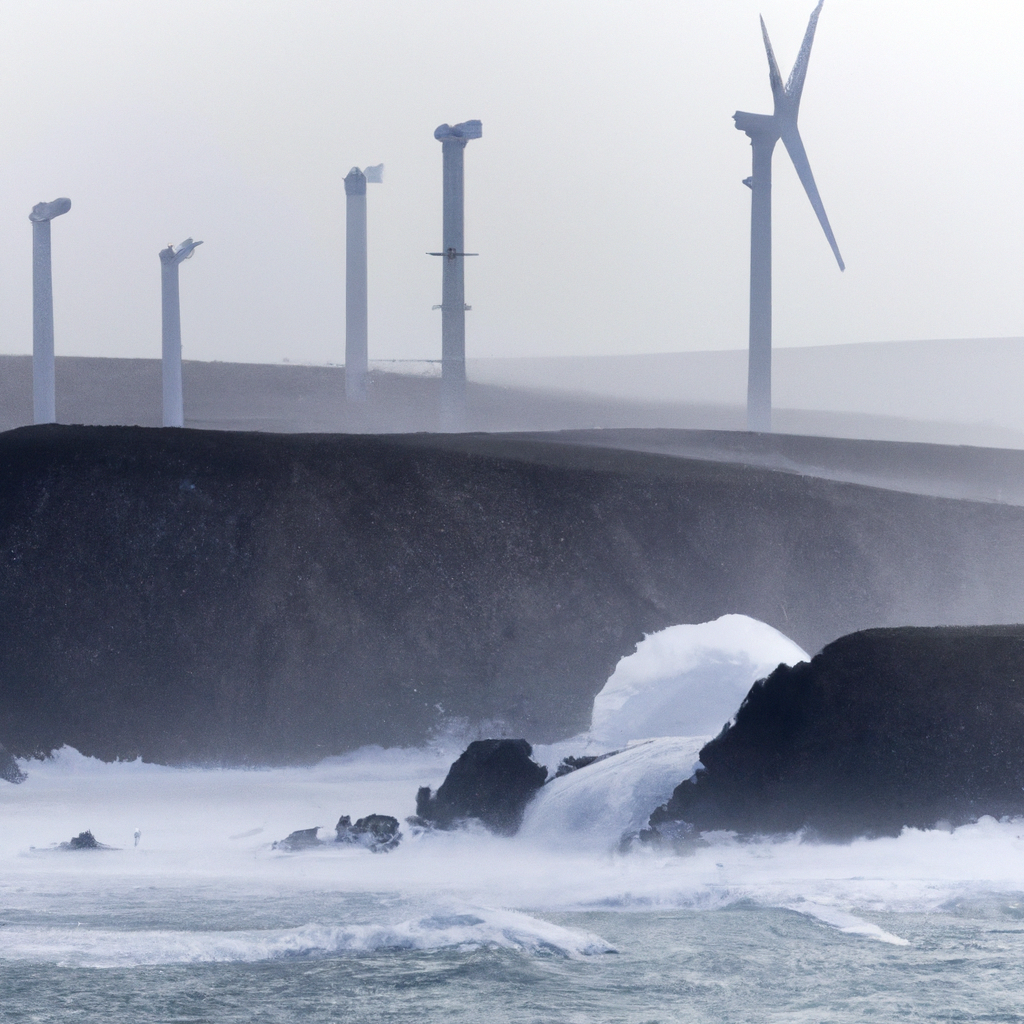Welcome to our comprehensive guide on the untapped potential of wave energy. In this article, we will dive deep into the world of ocean waves and explore how they can be harnessed to generate clean and sustainable energy. With the increasing demand for renewable energy sources, wave energy has emerged as a promising solution that can revolutionize the way we power our world. So, let’s embark on this exciting journey and discover the immense power of ocean waves.

Understanding Wave Energy
Wave energy refers to the kinetic energy carried by the oscillating motion of ocean waves. These waves are generated by the transfer of wind energy to the water’s surface. Harnessing this energy can provide a reliable and constant source of power without any harmful emissions or pollution. The potential of wave energy is enormous, considering that our oceans cover more than 70% of the Earth’s surface.
The Wave Energy Conversion Process
To capture wave energy and convert it into usable electricity, various technologies have been developed. One such technology is the oscillating water column (OWC) system. This system consists of a partially submerged chamber with an opening beneath the waterline. As the waves enter the chamber, the rising and falling water column forces the air inside to move, driving a turbine that generates electricity.
Another method is the point absorber system, which uses a floating buoy connected to a mechanical device. As the waves pass by, the buoy moves up and down, causing the mechanical device to convert the motion into electricity. These are just a few examples of the innovative technologies being used to harness wave energy.
Advantages of Wave Energy
Wave energy offers numerous advantages over traditional energy sources. Let’s explore some of the key benefits:
- Renewable and Sustainable: Unlike fossil fuels, wave energy is renewable and will not deplete over time. The power of ocean waves is constantly replenished by the wind, making it a sustainable source of energy.
- Abundant Resource: As mentioned earlier, our oceans cover a significant portion of the Earth’s surface. This vast expanse provides an abundant resource for harnessing wave energy.
- Environmentally Friendly: Wave energy is considered a clean energy source since it does not produce greenhouse gas emissions or contribute to air pollution. It helps reduce our carbon footprint and combat climate change.
- Predictable and Reliable: Waves are a predictable natural phenomenon, making wave energy a reliable source of power. Unlike solar or wind energy, which can be intermittent, ocean waves are more consistent and can generate electricity around the clock.
- Job Creation and Economic Growth: The wave energy sector has the potential to create numerous job opportunities and drive economic growth. Developing and implementing wave energy projects can stimulate local economies and contribute to a sustainable future.
Challenges and Future Outlook
While wave energy holds great promise, there are challenges that need to be addressed for its widespread adoption. Some of the key challenges include:
- Technology Development: Further advancements in wave energy conversion technologies are needed to improve efficiency and reduce costs. Continued research and development will play a crucial role in overcoming these challenges.
- Environmental Impact: It is important to carefully assess the potential environmental impacts of wave energy projects. Proper planning and mitigation measures should be implemented to minimize any negative effects on marine ecosystems.
- Infrastructure Requirements: Developing infrastructure for wave energy projects can be complex and costly. The installation and maintenance of wave energy devices in harsh marine environments pose engineering and logistical challenges.
Despite these challenges, the future outlook for wave energy is promising. Many countries around the world are investing in research and development to unlock the full potential of this clean energy source. As technology continues to evolve, we can expect more efficient and cost-effective wave energy systems to be deployed on a larger scale.
Conclusion
In conclusion, wave energy represents a vast untapped resource that can revolutionize the way we generate electricity. With its renewable nature, abundance, and minimal environmental impact, wave energy has the potential to play a significant role in our transition to a sustainable energy future. By harnessing the immense power of ocean waves, we can reduce our reliance on fossil fuels and mitigate the effects of climate change. Let’s embrace the opportunities that wave energy presents and work towards a greener and cleaner world.
Remember, the power of the ocean is waiting to be unleashed. Together, we can make a difference and create a brighter future for generations to come.